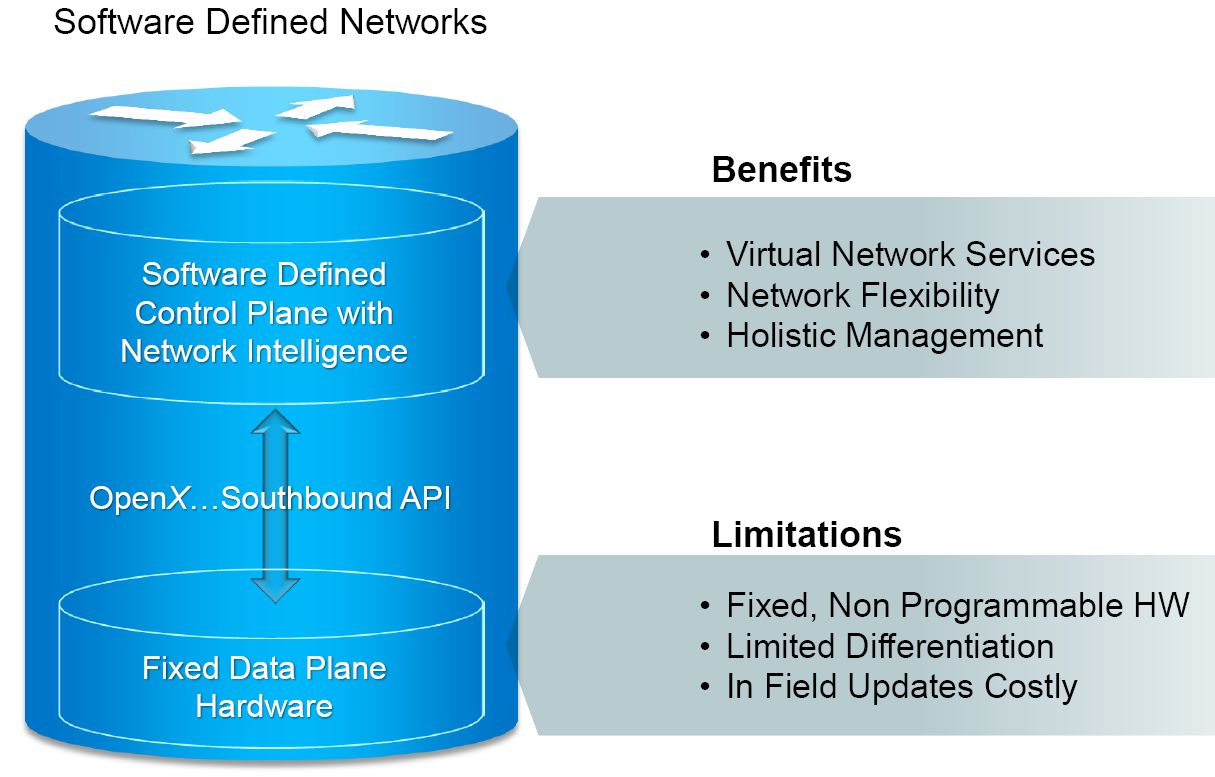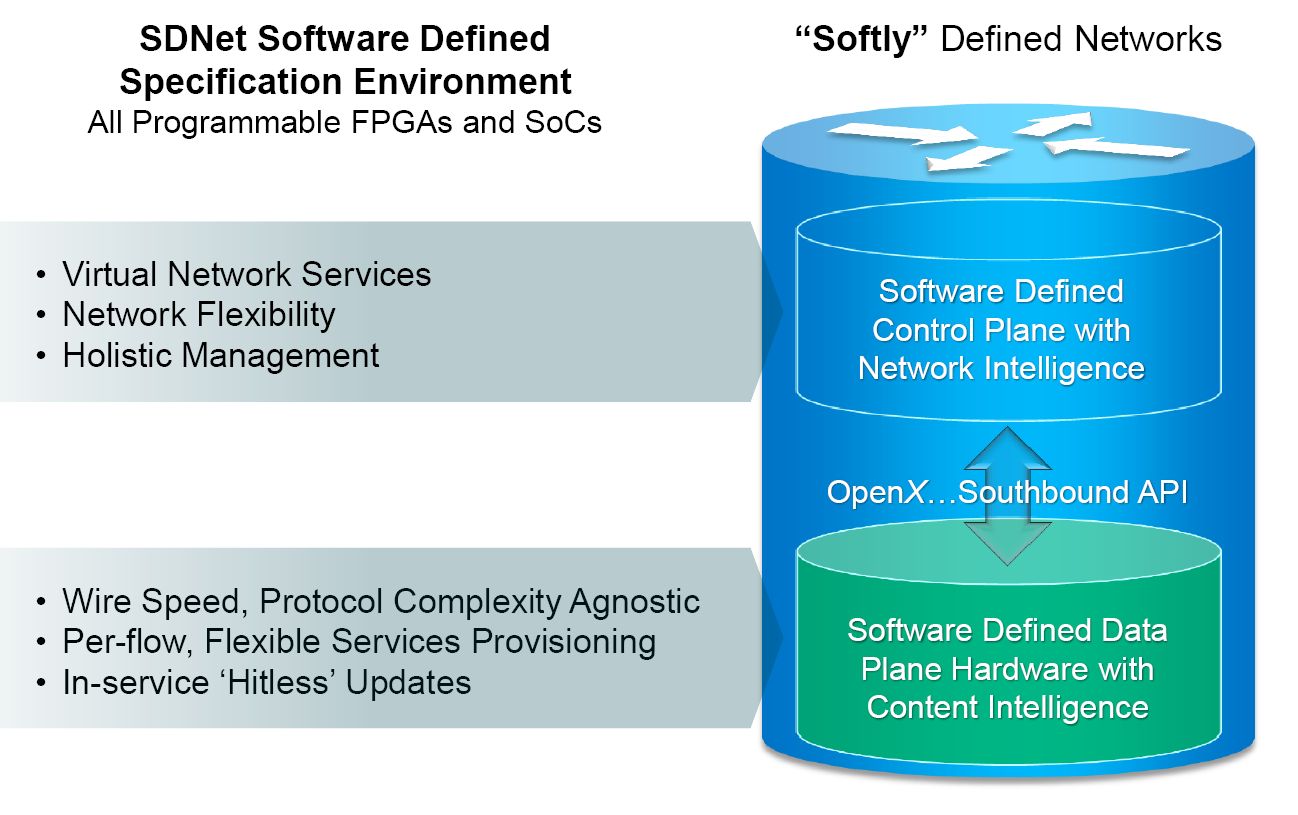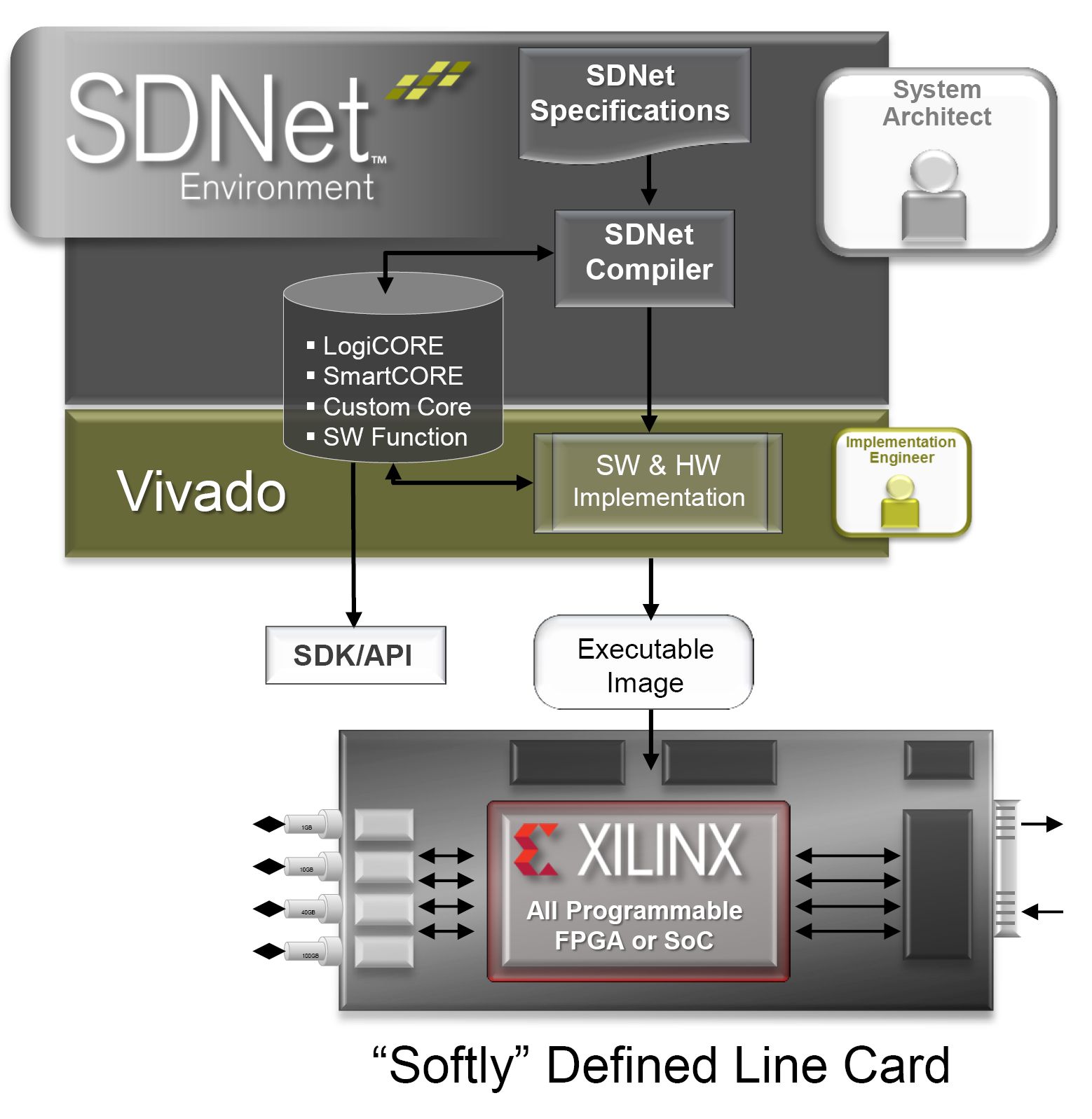
Xilinx’ SDNet: where software defined networks truly begin
The typical trade-off is mostly end-product cost versus design flexibility. Not only FPGAs are getting more cost-competitive with every new node, Xilinx is now promoting them as the only viable solution for what the company calls “Softly” Defined Networks, a step in flexibility that goes far beyond Software Defined Networks (SDN) as they are conceived today.

Figure 1: a conventional software defined network.
In contrast to traditional SDN architectures, which employ fixed data plane hardware with a narrow southbound API connection to the control plane as shown in figure 1, Softly Defined Networks are based upon a programmable data plane with content-intelligence and a rich southbound API control plane connection, as shown in figure 2.

Figure 2: a "softly" defined network.
By using FPGA fabric instead of ASICs or ASSPs for the data plane, Softly Defined Networks are flexible on both software and hardware counts, while enabling reconfigurable content-aware data pre-processing at wire speed.
For network OEMs, carriers and multiple systems operators (MSOs), this translates into new services that can be provisioned on a per-flow basis, with in-service network upgrades while operating at 100 percent line rate.
Key to these “Softly” Defined Networks is Xilinx’ Software Defined Specification Environment, SDNet. Combined with the company’s All Programmable FPGAs, SDNet allows system architects to specify and deploy exact application services without requiring an understanding of the underlying device architecture or a complex programming language – see below.

Compared to ASIC or ASSP-based line cards, the “softly” defined line card envisaged by Xilinx would drastically reduce OpEx (no need to go and physically change hardware) while extending the reach of CapEx with line cards staying longer into the network infrastructure.
The FPGA vendor has already shipped its SDNet framework to tier-one customers who are currently evaluating new packet processing and data forwarding scenarios that the added flexibility gives them.
“Network OEMs are still working to understand what will be the actual savings made over CapEx and OpEx so it is difficult to put hard numbers on these” said Gilles Garcia, Director of Marketing & Corporate Global Account Manager for Wired Communications at Xilinx, “but they can expect a 10 fold increase in productivity to develop a new line card” he added.
“There is a fierce competition between server players, and when they are using ASSPs, only software is the differentiator at the control plane”, explained Garcia.
“For future networks, we need to transition from 1Gbit to 10 or even 100Gbit line cards, but none of the server farms natively support these speeds, so there is a need for accelerators, for packet processing, for data pre-processing to optimize network integration with specific algorithms, multiple SSD controllers” Garcia added.
Those driving this transition to software defined networks are mostly Telco providers and data centres. Garcia gave us some examples of new services enabled by softly defined networks. These could include specific packet searches and data-filtering, say to provision premium services for Netflix video-on-demand services with a set Quality of Service (QoS).
In the future, this flexible approach to designing reconfigurable networks could enable smarter network boxes, maybe designed with more cache capacity so more decisions could be made on the data at the line card level rather than the data having to go all the way to a data centre for processing.
This could play in favour of so-called Fog Computing, where data generated by IoT devices and gateways at the edges of the network could be pre-processed and re-routed according to a set of application specific rules, all configured using the same SDNet software interface.
Other trends facilitated by SDNet include server virtualization and storage virtualization whereby a bulk of storage capacity made up of pure memory racks could be used across a data centre at several levels of cache, linked to pure computing racks. This is where you would need very high speed switches to route the data between storage pools and processing pools, transparently for the end-user.
Looking at its ultimate line card implementation, one could conclude that Xilinx aims at displacing ASICs out of the networking business.
“We are going head-to-head with companies like Broadcom”, admits Garcia, “with our FPGAs, customers can implement exactly what they need, when they need it to address new services, without overprovisioning their line cards, or without having to design unwieldy swiss-army knife ASICs”.
Only 18 months after it started shipping its first FPGAs designed at 28nm, the company claims to have a 70% FPGA market share at this node, reflected in the network and server markets. This node alone generated about 350 million US dollars in revenue in last fiscal year and the company hope to double this figure over the current fiscal year.
Being the first to ship 20nm based FPGAs, Xilinx also claims a 100% FPGA market share at this node and hope to keep its market advantage in the networking space by locking the SDNet software development platform to its own devices.
So could ambitious Xilinx become a takeover target?
Garcia declined to comment.
Related articles:
Xilinx lays grounds for 16nm FPGAs with new architecture
Xilinx unveils new device families sharing a unified 28nm architecture roadmap
FPGA and FPASSP mapping tools: online and free
 If you enjoyed this article, you will like the following ones: don't miss them by subscribing to :
eeNews on Google News
If you enjoyed this article, you will like the following ones: don't miss them by subscribing to :
eeNews on Google News


